The story began in 2022, when CHASE team members Catarina Guerreiro (MARE/FCUL) and Jan-Berend Stuut (NIOZ-VU) crossed paths with PRIMUS colleague Javier Arístegui (IOCAG-ULPGC) at the Open Science Conference on Eastern Boundary Upwelling Systems (EBUS): Past, Present and Future, held in Lima, Peru. It was at this vibrant meeting that Catarina and Javier first discussed a potential collaboration. The idea: to design a microcosm experiment to investigate how phytoplankton communities respond to the deposition of aerosol-borne nutrients—a concept grounded in previous research at both FCUL (project MSCA-H2020 DUSTCO) and IOCAG (projects FLUXES and eIMPACT). Though promising, the opportunity to bring this experiment to life would only materialize two years later.
Fast forward to 2024, under the umbrella of the Horizon EU Ocean ICU (Ocean-ICU – Improving Carbon Understanding), led by the Norwegian Research Centre (NORCE), Javier was tasked with coordinating the project’s primary marine research campaign (Task 4 of WP4 – Whole ecosystem carbon budget assessment). Catarina was invited to join the expedition, bringing the collaboration full circle.
The EU Horizon project Ocean ICU team on board of RV Sarmiento de Gamboa.
The Ocean ICU expedition set sail aboard the RV Sarmiento de Gamboa, traveling from Walvis Bay, Namibia, to Las Palmas de Gran Canaria, Spain. Its mission: to assess the role of regional variability across the Eastern Atlantic in shaping the ocean's complex carbon pumps. This included quantifying gravitational (organic and carbonate), migrant, and mixing fluxes contributing to carbon transport. A key focus was the influence of aeolian dust—carried by the winds from the Saharan and Namibian deserts—on marine ecosystems and biogeochemical cycles. This interdisciplinary voyage marks a significant milestone in collaborative ocean science, uniting long-standing ideas with cutting-edge research to better understand how the ocean breathes carbon.
Why study the marine Carbonate Pump?
Because it plays a vital role in Earth’s carbon cycle. The carbonate pump—a key component of the ocean’s biological pump—transports carbon from the surface to the deep ocean through the production, sinking, and burial of calcium carbonate (CaCO₃) shells. These shells are produced by a range of marine organisms, of which the most important are coccolithophores (calcareous nanoplankton, 2–75 μm), planktonic foraminifera (microzooplanktonic protists, 100 μm–1 mm), shelled pteropods (macrozooplanktonic mollusks, 1–30 mm) and, to a lesser extent, heteropods (holoplanktonic gastropods). Both pteropods and heteropods are characterised for producing aragonite shells.
Different species of coccolithophores (calcifying nannoplankton) collected by seawater filtration from the open ocean, and captured with a scanning electron microscope (SEM). Photo credits: Monteiro et al. (2016).
Despite their significance, there is still limited data on how much each group contributes to total calcium carbonate production (Ziveri et al., 2023). Studying the carbonate pump—and how it's influenced by climate change—is essential for predicting future CO₂ levels, understanding ocean acidification, and assessing the ocean’s ability to regulate Earth’s climate. To that aim, Catarina Guerreiro was in charge of coordinating sampling activities related to the ocean’s Carbonate Pump, from collecting seawater to study coccolithophores – her expertise – to particulate inorganic carbon, and plankton nets to assess calcifying zooplankton communities. Seawater samples were also collected for the study of phytoplankton pigments, to be analysed at MARE-FCUL for providing complementary information regarding the phytoplankton community living across the photic zone at the same sampling stations.
We were fortunate to count on the expertise of Marja Koski, a marine zooplankton specialist and Associate Professor at the Technical University of Denmark, who led the plankton net sampling during the cruise. The work was enthusiastically supported by a team of dedicated MSc students: Mathieu Vasey (University of Liège), and Hannah Croysdill and Manuel de Brito (Vrije Universiteit Amsterdam), who eagerly immersed themselves in every aspect of the scientific operations related to the Carbonate Pump.
The images above illustrate a typical CTD station workflow: (A) first, we deploy the CTD rosette to measure ocean properties and collect seawater at various water depths across the ocean water column using Niskin bottles; (B) then, we sub-sample seawater from the Niskin bottles, and (C) filter the water in the lab to study phytoplankton communities—particularly coccolithophores—that were living in the photic zone.
The images above illustrate how we undertook (A) a WP2 plankton net haul and (B) to collect plankton from the uppermost 200 m of the ocean water column, for the study of the calcifying plankton communities living in the Eastern Atlantic. Among the many, diversified – and beautiful! – observed organisms, we found (C) pteropods, (D) plankton foraminifera, and (E) heteropods. Photo Credits: Catarina V. Guerreiro, Markel Gomez-Letona and Jana Piñel.
PIC and calcifying zooplankton samples will be analyzed by OceanICU member Alex Poulton, who will integrate these data with coccolithophore observations studied by Catarina to better quantify the contribution of different calcifying plankton to oceanic carbonate export. This work will support ongoing and future collaborations between the Universities of Lisbon (Portugal) and Heriot-Watt (UK).
In collaboration with IMM researchers Xosé Antón Álvarez-Salgado and Markel Gómez-Letona, we also sampled the ocean water column using a Marine Snow Catcher – an instrument similar to a giant 100-liter Niskin bottle—to collect sinking coccoliths and coccospheres exported out of the photic zone. By separating particles based on their sinking velocities (slow, moderate, and fast), the team hopes to better understand the export dynamics of coccolithophores and the role of carbonate "ballasting" by different morphotypes in accelerating the sinking of organic aggregates.
Above, we show the Marine Snow Catcher (MSC), used by Pepe Salgado and his team to study export production in the upper ocean. (A) The MSC is deployed to 10 meters below the Deep Chlorophyll Maximum (DCM), where it collects up to 100 liters of seawater. (B) After a 24-hour settling period, particles are sampled based on their sinking speeds—slow, moderate, or fast. Sinking speed – to which the coccolith-ballasting effetc can contribute – is key to understanding how efficiently organic material is transported to the deep ocean, which in turn affects long-term carbon storage and the ocean’s role in regulating climate. Photo Credits: Markel Gomez-Letona and Catarina V. Guerreiro.
In parallel with these activities, Catarina also assisted shipboard dust fertilization experiments to examine the biological impacts of aerosol inputs from two major African desert regions: the Sahara and the Namib. The experiment’s protocol was developed in the course of 2024 by Aja Trebec, a PhD student working with Javier Arístegui, with input and dust samples from Catarina and Jan-Berend Stuut. To understand the effects of different modes of dust deposition, Aja and Catarina have simulated both dry (gravitational settling) and wet (rainfall) dust deposition events using microcosms of natural seawater collected from three key and hydrologically distinct regions across the tropical South, Equatorial and North Atlantic.
Here is a typical day at an “Aja’s Dust Experiment Station.” (A–B) The day began with a trip on the rubber boat to collect 60–120 liters of natural seawater—taken away from the ship to avoid trace metal contamination; back on deck (C–F), the water was brought to the container lab and distributed into transparent low-density polyethylene Whirl-Pak bags. These served as microcosms for experimental treatments with Namibian and Saharan dust, followed by subsampling for a range of biological and biogeochemical analyses. Photo Credits: Markel Gomez-Letona and Catarina V. Guerreiro.
Finally, to characterize the atmospheric component of the study, aeolian dust samples were collected throughout the cruise using a high-volume Anderson dust collector provided by Jan-Berend. This work was carried out by Felix Lacher, alongside students Hannah and Manuel.
Though very busy, not everything during the cruise was strictly science. As often happens, a marine expedition offers a rare opportunity to truly experience life in the middle of the ocean—and to witness firsthand many natural phenomena we usually only encounter in books, films, or scientific literature. For many of us, this was our first time crossing the Equator—an event marked by the traditional “Equatorial Baptism”—and sailing under the extreme heat and humidity of the Intertropical Convergence Zone. We could physically feel the shift in atmospheric and oceanic conditions as we moved northward across the Eastern Atlantic.
Expeditions like this are not just about data collection; they’re also about connection. They provide a space to meet like-minded colleagues and students, exchange ideas, and build lasting collaborations that enrich the scientific journey.


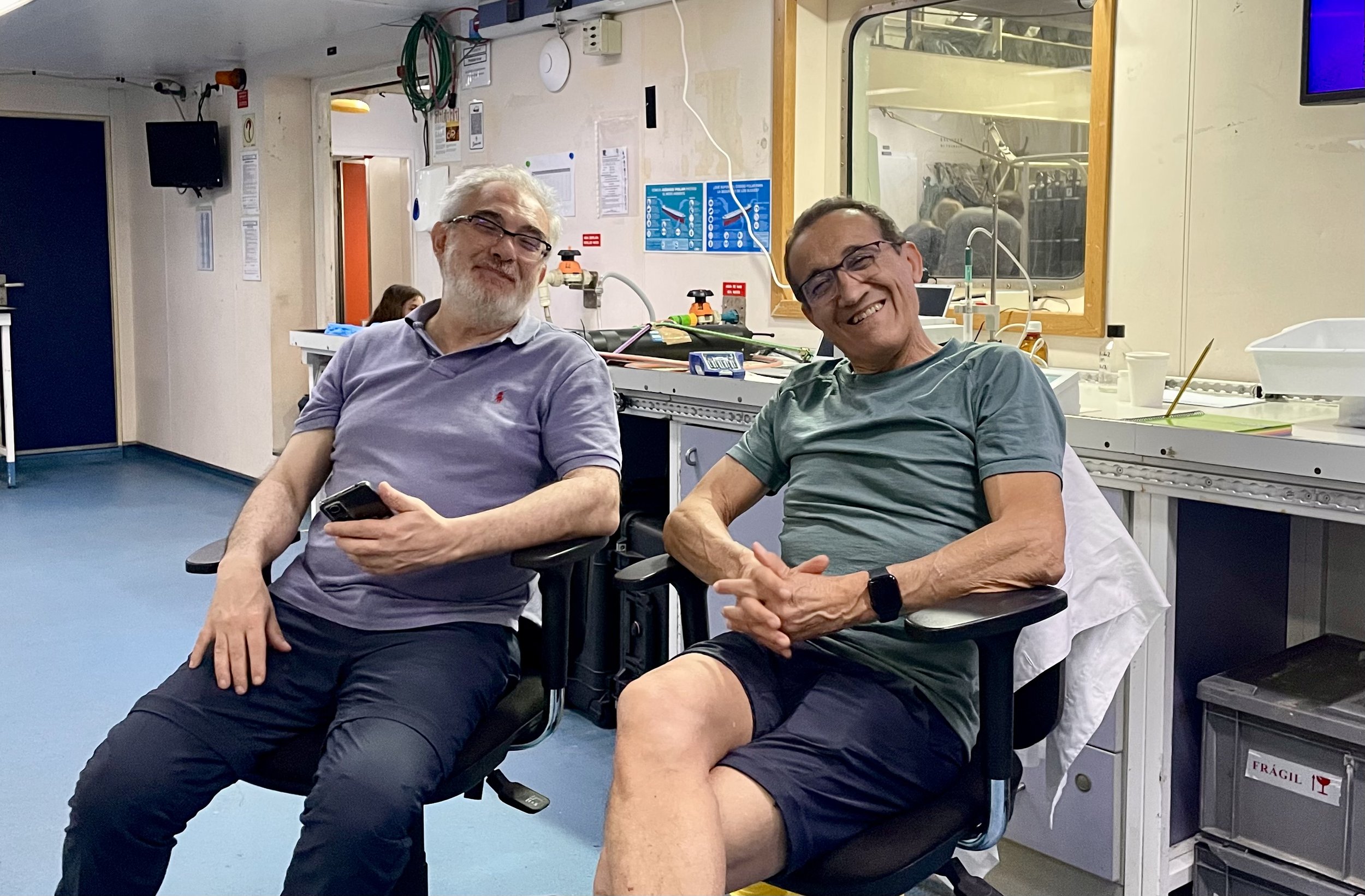

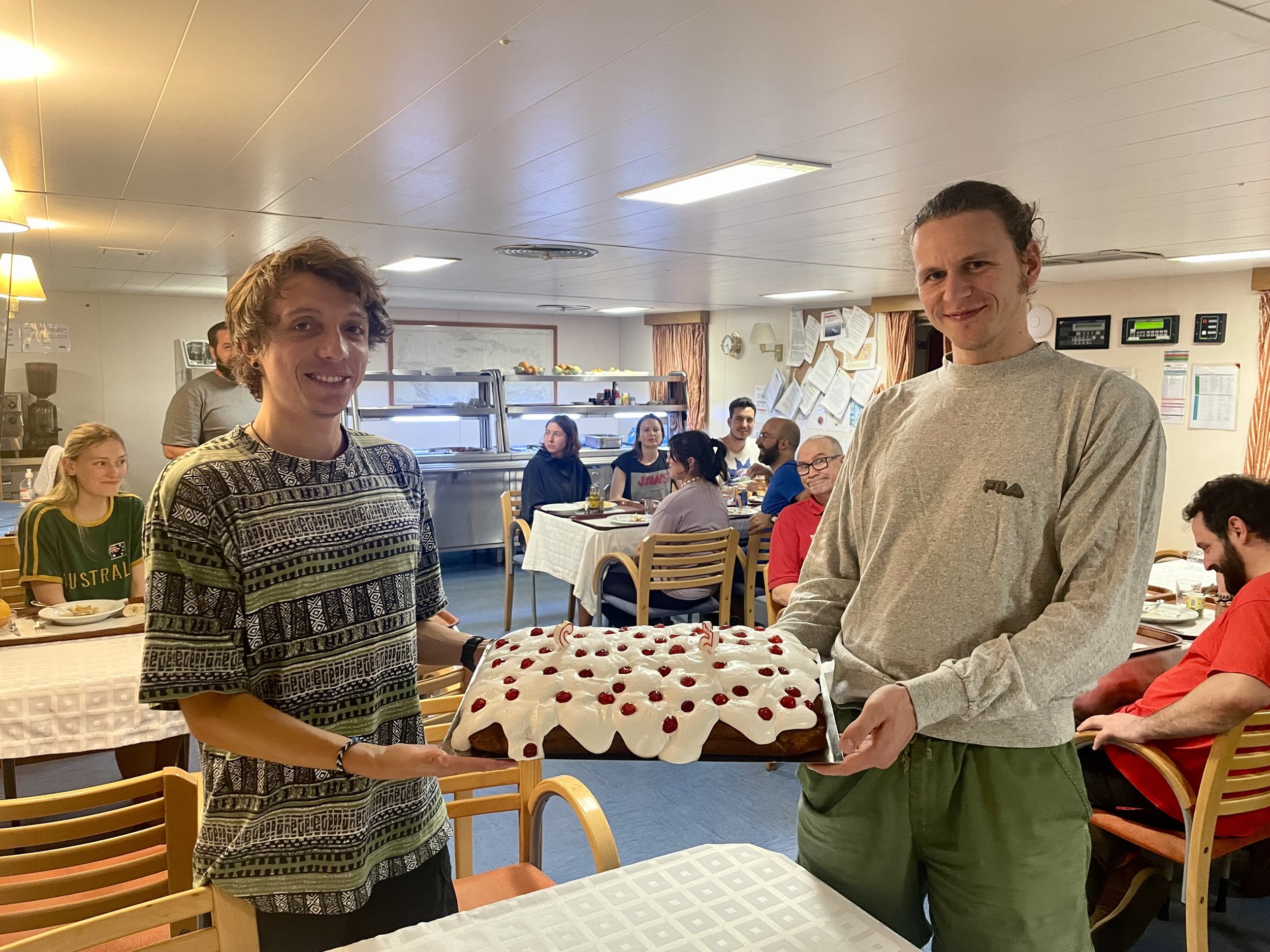

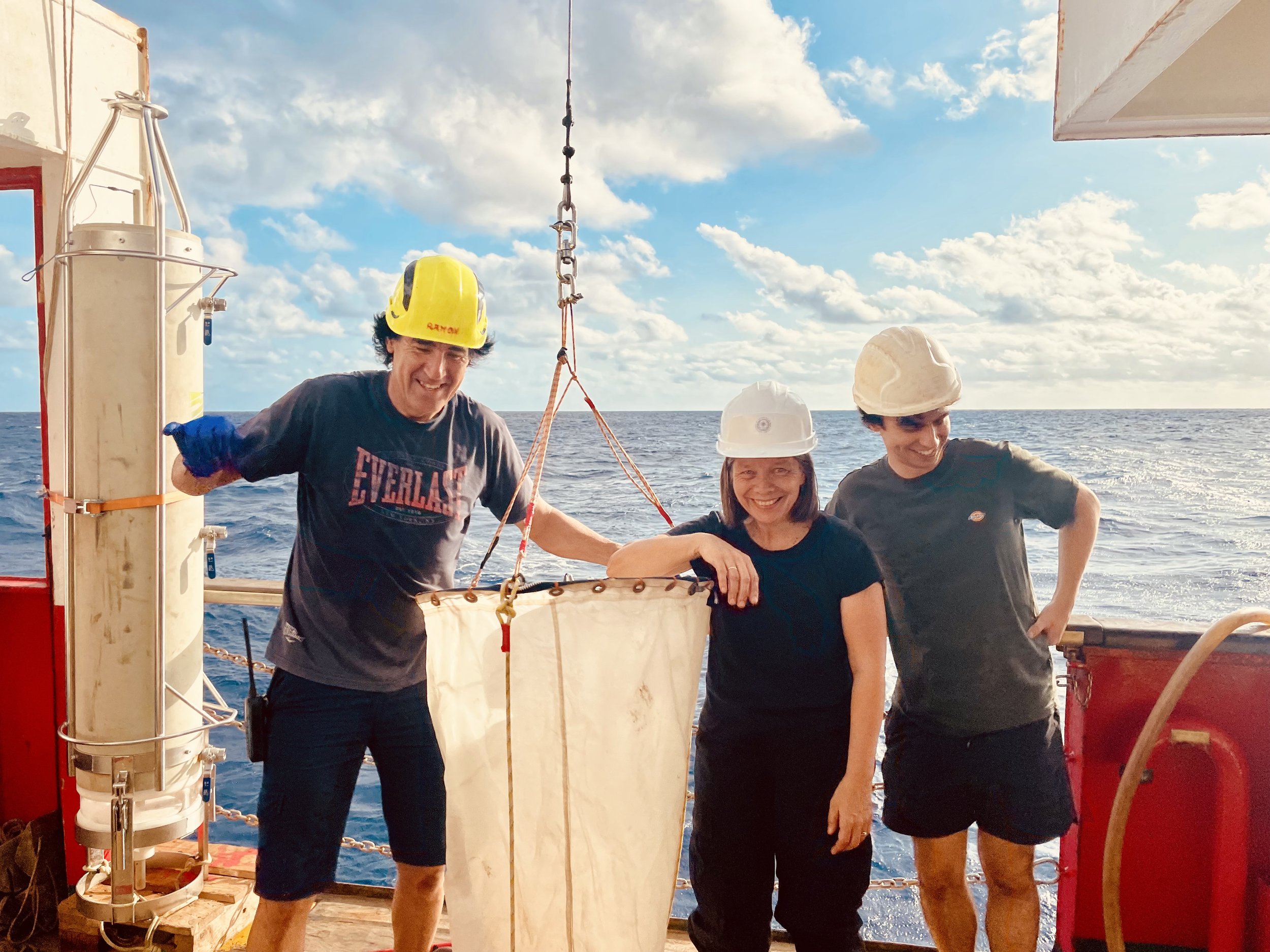
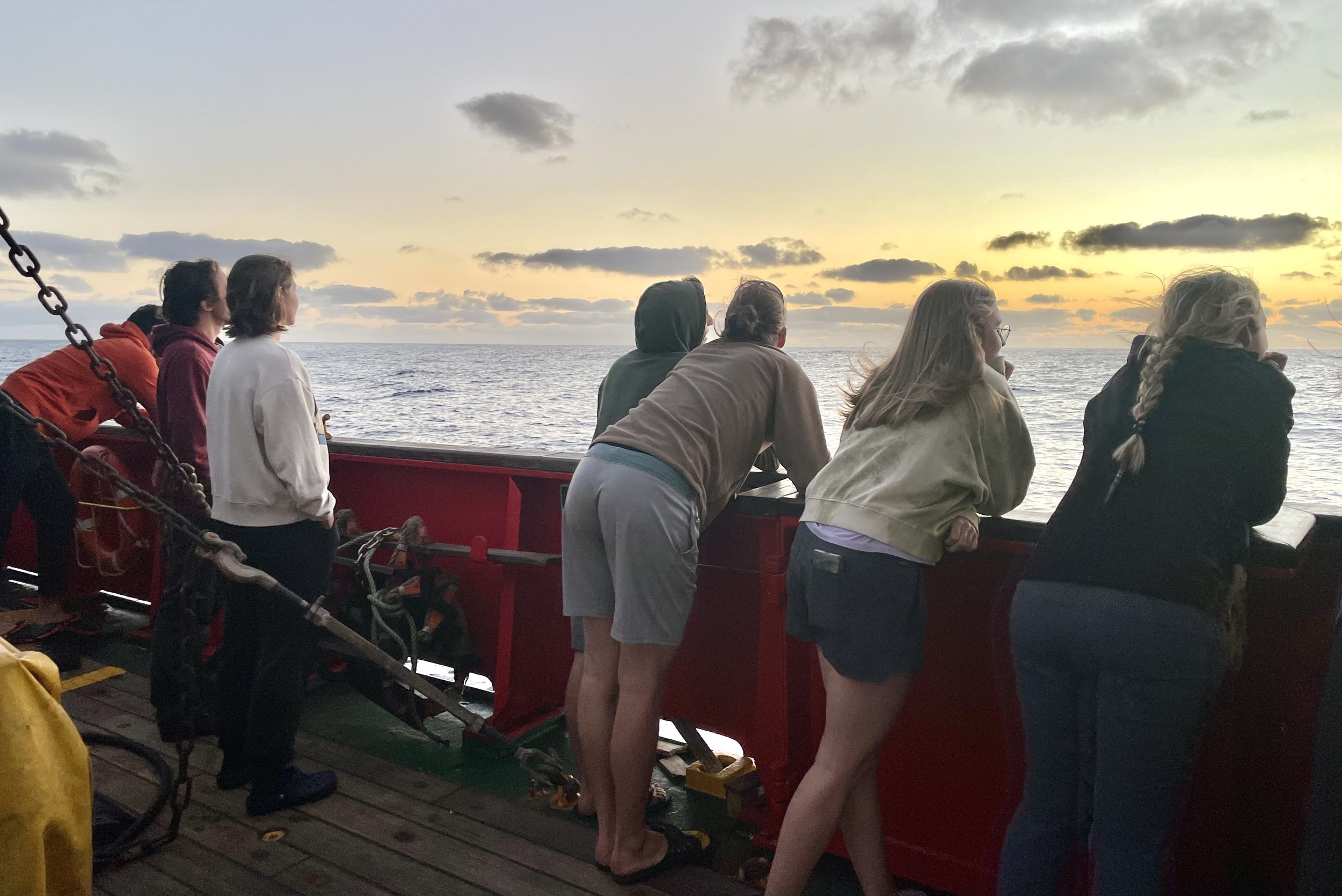
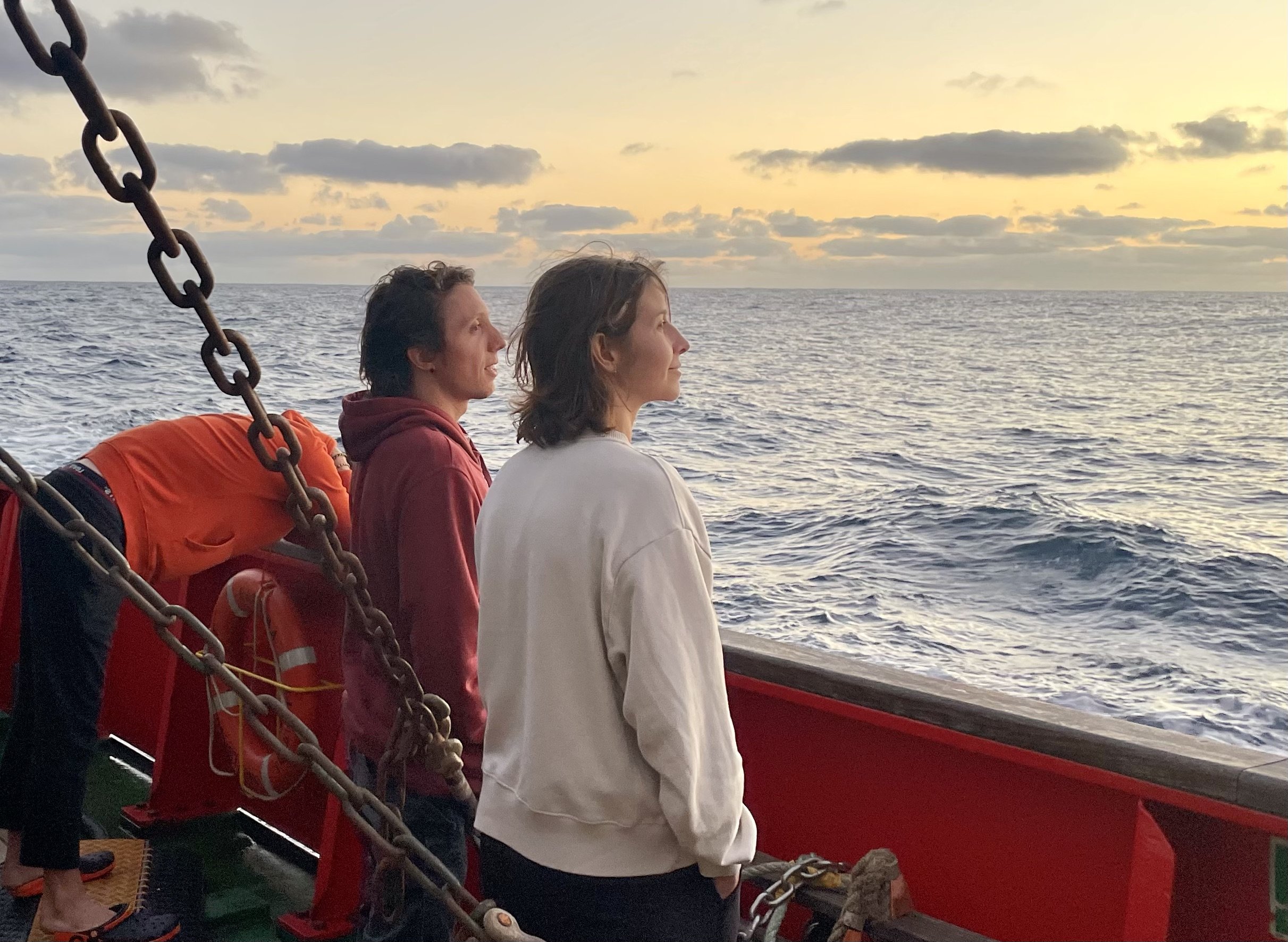
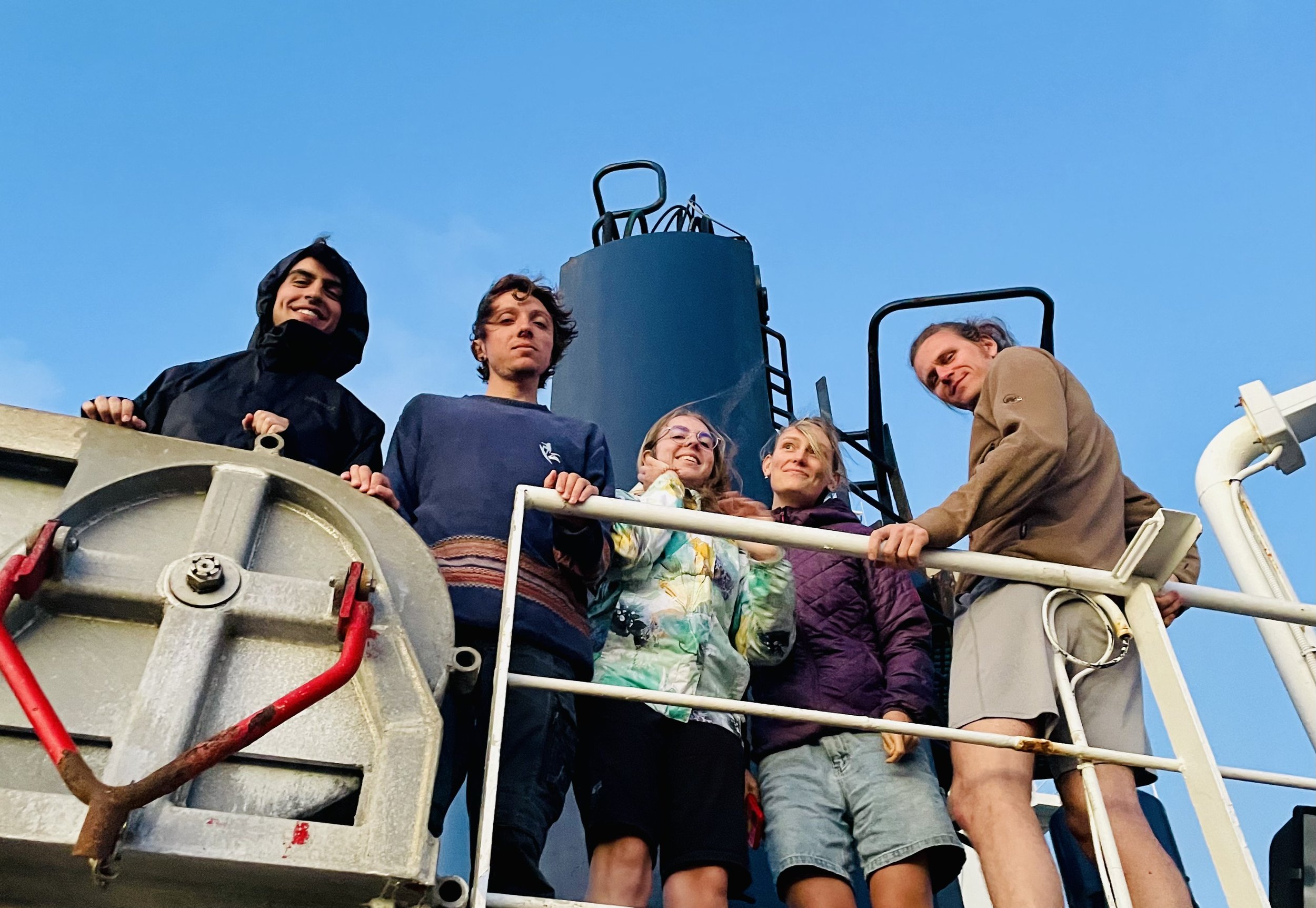
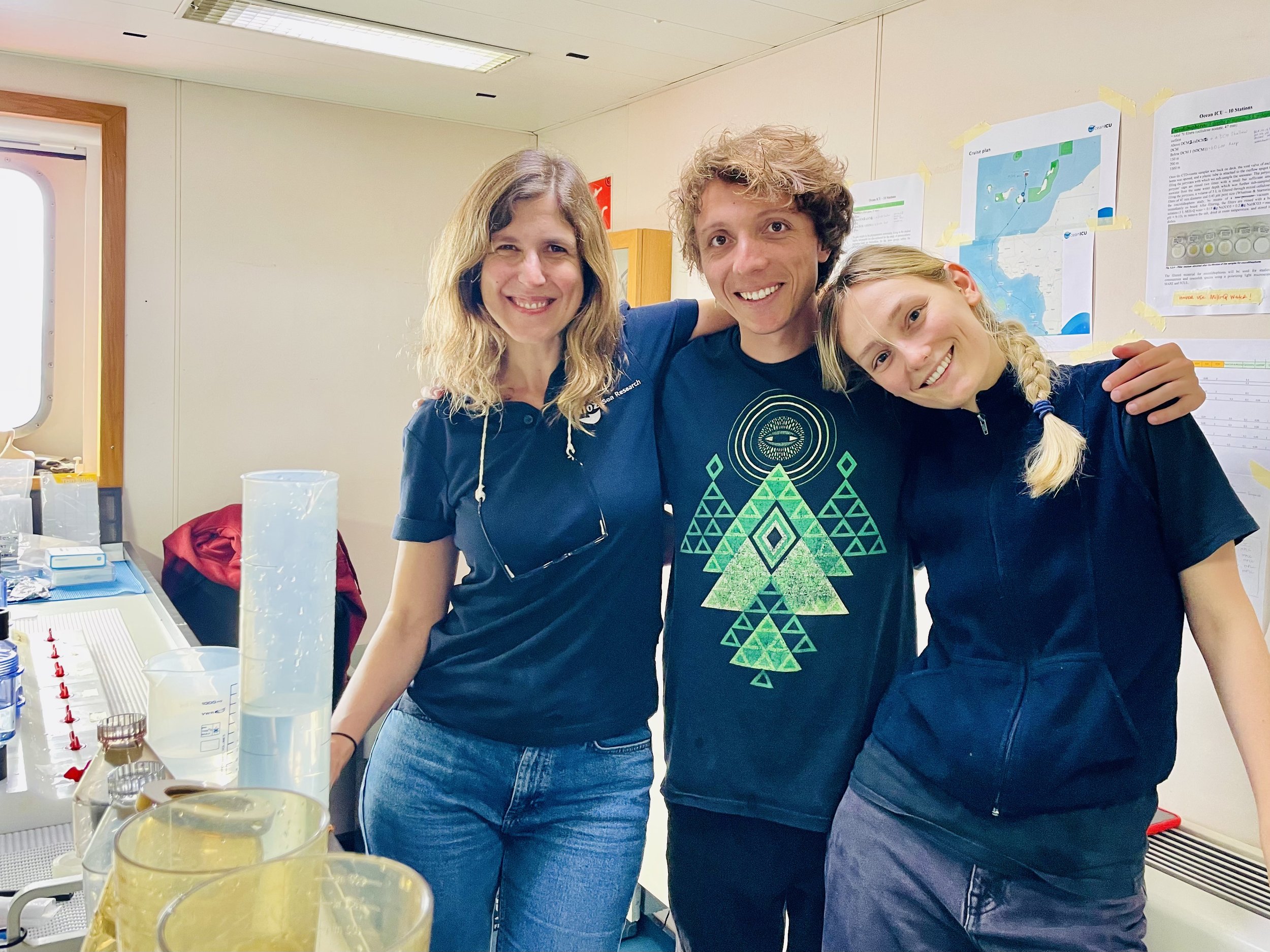

All in all, this was a great experience. The rich dataset we gathered will be analyzed using a multiparameter approach—integrating biological, chemical, and atmospheric data—to explore how calcifying plankton communities interact with ocean-atmosphere dynamics across dust-influenced regions of the Atlantic. This work will feed into improved parameterizations and more accurate biogeochemical models that help assess climate feedbacks on the ocean’s carbon pumps.
Many exciting discoveries are on the horizon, made possible through new interdisciplinary collaborations within the Ocean ICU project. Stay tuned! 😊






